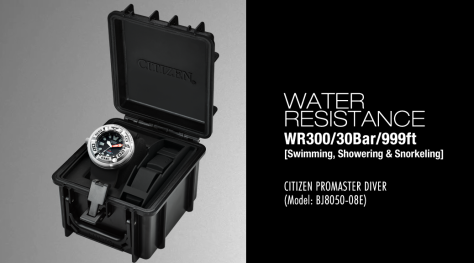“…if we’re not going to explore the ocean’s depths why wear a dive watch at all? Well…why not?”
Dive watches are becoming commonplace nowadays.You see them adorning the wrists of office executives, entrepreneurs and just about everyone else who appreciates the rugged styling and technical features of this particular watch style.
What sets the dive watch (also called a diver’s watch) apart from other watches is that it’s used specifically for that—diving. But aside from actual frogmen and SCUBA sportsmen, how many of us are really going deep sea diving? And if we’re not going to explore the ocean’s depths why wear a dive watch at all?
Well…why not?
The dive watch is an exceptionally well-made timepiece that will serve you well. For starters it can get wet. They are water-resistant at amazing depths. You can be sure that it will remain working even during emergencies. They can withstand pressure.
In short—it can take a beating.
Plus they make you look really good. There’s just something about a dive watch that signals competence, skill and the adventurous life, whether you’re deep sea diving or just going about your daily routine.

Choosing a Dive Watch
The watch world is full of dive watches. Some are genuine, others are just masquerading as dive watches—more fashion than function. There are different reasons for buying a diver’s watch, but for serious watch fans there are some essential features which you have to look out for.
- Water Resistance – If you’re just going snorkelling or light splashing you need to have a watch that canwithstand pressures of at least 100 meters. With serious diving you need something that can last up to 300 meters. The watch has to meet ISO-6425 specifications, including being able to withstand 25% more than its indicated depth. If your watch is water resistant up to 100 meters, it means it has actually withstood lab tests simulating pressures of up to 125 meters.
- Screw-down Crown and Case Back – the crown and case back of the watch are two of the most vulnerable points of a dive watch. These should be sealed by gaskets for a completely watertight seal. The watch pusher and the crown should be screwed down and secured tightly before each dive.
- Unidirectional Bezel – the bezel should only rotate counter-clockwise. There should also be a luminous marker at the 12 o’clock mark. This enables to the diver to set the index to the minute hand at the beginning of the dive and easily see how long he has been under. If the uni-directional bezel is accidentally nudged or rotated, it will show greater time underwater rather than less. This will allow the diver to surface earlier rather than later. Better to err on the side of caution.
- Legibility – you should be able to tell time at a glance. The deeper you go under the ocean, the darker it becomes since light is absorbed faster under water. Since you’re not in your native environment, being able to keep track of time easily is a must. Characters should be easily recognizable and have as little design complications as possible.
- Corrosion Resistance – the case and strap should be made of high-quality stainless steel or titanium. Your watch should be easy to clean and should be resistant to salt build-up.
- Special Strap – You need a strap that you can work in the water as well as in dry land. Straps come in steel as well as in rubber and nylon. Serious dive watches will allow you to extend the bracelet to enable you to wear it over a wet suit.

It’s all up to you
There are various reasons for buying a dive watch. Whether you’re a serious diver, a weekend warrior, or simply a sports watch afficionado, you can choose from a variety of styles and price points but the ultimate decision rests on you.

